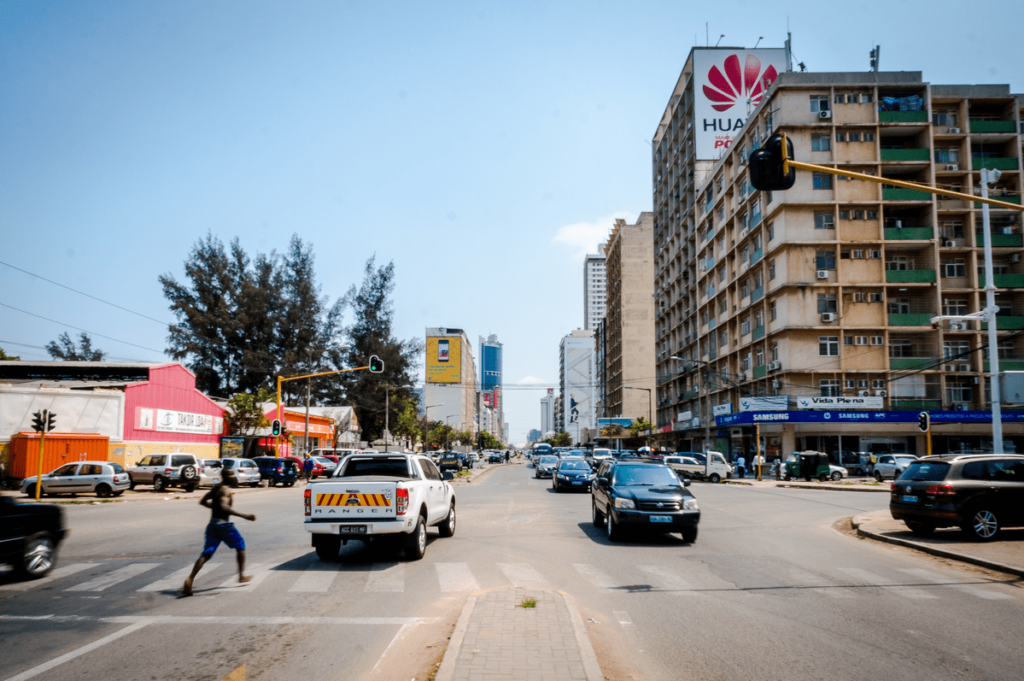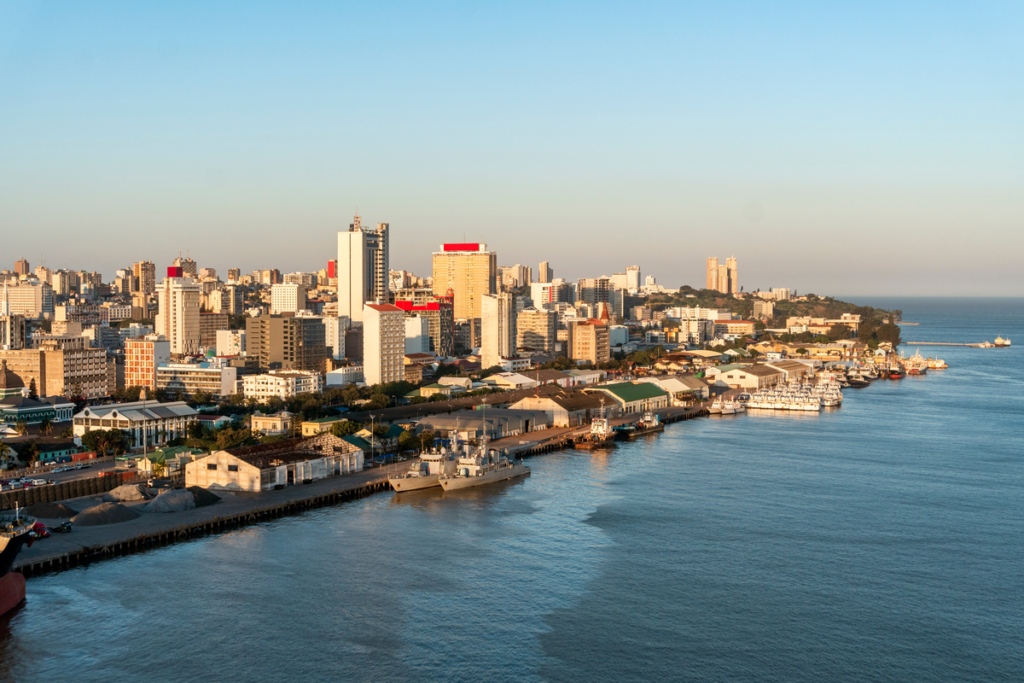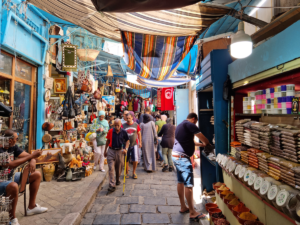By looking at who, why, what and how, the city of Maputo has defined actions that will increase its resilience.
The management of cities is increasingly complex. Decision-makers, service providers, governing bodies, and practitioners of all types are dealing with a plethora of challenges. These are the result of rapid urbanization, the climate emergency, changing populations, or outdated governance structures unable to respond to the needs of today’s urban citizens.
While safety, risk, and protection will not make headlines when managed well, they are rarely targets of political agendas until required after major incidents. In many cities, addressing risk does not go beyond preparing for natural disasters by large-scale infrastructure projects. Some municipalities may have a specific department working on this issue, while others rely on national governments under the overall umbrella of civic protection.

The 2030 Agenda, however, calls for cities to be resilient. The concept of resilience goes beyond natural disasters or infrastructure-only solutions to consider what internal and external risks are faced in the city, how these risks combine in times of stress, who has the power to act and in which political context. Though complex, resilience is inherent in the many tasks undertaken by local governments. By channeling these efforts into a resilience project, UN-Habitat has worked with the Municipality of Maputo, Mozambique to create a resilience profile of the city that includes all the key ingredients to resilience.
Who
At their core, cities are people. Resilience comes from the actions of those living and working in the city, everyone from the City Council to the residents. However, for resilience to be far-reaching, it must consider the needs, realities, and power to act of everyone, especially those that are vulnerable and/or traditionally excluded. Building resilience should empower urban residents to know what they can do to reduce risk, prepare for shocks and support city-wide recovery efforts.
In Maputo, the Municipality championed the cross-sector resilience profiling set out by UN-Habitat in the City Resilience Profiling Tool. Through a series of workshops (five), numerous departments from the Municipality were brought together to establish how each can (and will) contribute to the resilience of the city. The workshops and subsequent follow-ups resulted in the partenrs gathering key data on elements such as mobility, basic infrastructure, economy, environment, as well as other key areas of the city’s functionality.
In total, some 134 stakeholders were identified through the resilience profiling, including actors in local government and public entities but also extended to private entities, civil societies, and major institutions. The role of each stakeholder is mapped with respect to the city’s functionality and potential risks it faces. For example, although national and municipal building legislation is up to date, understanding the role of the municipality’s technicians and engaging them in this profiling exercise allows the municipality to better understand levels of compliance. With this engagement and understanding, the municipality can address the rapid and unregulated urbanization in the city, improve construction and infrastructure, and reduce risk.
What
Each city is unique and operates in a specific context. The different functions, components, and services offered in the city fluctuate over time and space. However, to assess which areas of the city’s performance are most vulnerable, resilience profiling seeks to gather key data and indicators. For each of the 480+ indicators, a set of benchmarks adapted to the city is suggested, resulting in an easy-to-read photograph of the city.
In Maputo, the Municipality was able to gather 45% of primary data requested in the profiling exercise through consultation with various departments and city stakeholders. Data was also gathered from the national government, research papers, and reports on the city and all data was verified with stakeholders and counter-checked with comparative sources for consistency. The resulting profile is a useful dataset for decision-making across the city. Measuring urban performance has allowed the city to set realistic targets and goals that can be integrated into and mapped across the functions of the city.
Why
All cities face risks but some are easier to track than others. History can reveal recurring shocks such as droughts, floods, and cyclones that are found in Mozambique. However, the frequency and magnitude of these natural threats are changing. Human-made threats such as cyber-attacks, political unrest and epidemics may be less easy to identify when using historical data only. Combining data on both types of hazards with the internal stressors faced by the city (unemployment, poverty, housing crisis, etc.) allows for a comprehensive in-depth risk mapping.
In the city of Maputo, historic data on draught was gathered as one of the main natural challenges faced, however, this was crosschecked with data on water and food management to assess vulnerability in the entire system. Similarly, spatial segregation, as well as inadequate structures and infrastructure coverage were revealed as stressors that left many urban residents vulnerable. Government data was collected and combined with satellite data to create climate change predictions. This extensive risk mapping along with an analysis framework centered on people, assets, and processes not only revealed why the city needed to act but also gave prioritization to the action areas outlined below.
How
Context is everything. In addition to analyzing the risks of a city, current policies and initiatives should be included in any city resilience assessment. Building this evidence base allows cities to analyze the potential impact of current plans, policies, and initiatives on their resilience. From these findings, cities can effectively modify and improve existing initiatives, as well as propose new initiatives from a resilient and sustainable approach adapted to their specific context.
In Maputo, 79 existing documents were collected, including documentation related to sector planning, territorial planning, and development. An evaluation of the degree to which stresses would be affected, i.e. improved, worsened, or remain the same – by the application of policies, programs, initiatives, and projects, was conducted. The analysis revealed that while Maputo has advanced promising legislation and policies, due to a lack of implementation and knowledge of them, the issues related to each of the stresses are not being adequately addressed. The findings help guide Maputo to select existing plans and projects that will improve the city’s performance if adequately implemented, as well as any areas which require the development of new initiatives to decrease the intensity or eliminate identified stresses.
Actions for Resilience in Maputo
After analyzing the city’s performance, as well as its current policies and initiatives in place, the team from the Municipality of Maputo and UN-Habitat identified key Actions for Resilience. The Actions aim to correct and re-orientate public policies around stresses and potential shocks related to urban informality, transport and urban mobility, management of the urban metabolism, and management and recovery of critical ecosystems in key geographic areas in Maputo. The Actions include actions for direct implementation into already approved city planning, measures to be pursued by the city through agreements with other city actors or government actors beyond the local level, and resilience priorities for advocacy at the institutional level. Each action is structured into 3 integrating actions that include the revival of the municipal archive, review of the Urban Structure Plan (PEUMM), and the creation of a Resilience Unit.
Urban Informality
In Maputo, urban informality that is closely linked to the rapid urbanization combined with little to no regulation is a continued stressor and increases the susceptibility of the city to shocks like floods and cyclones. Actions for Resilience around urban informality in Maputo include:
Transport and Urban Mobility
The state of urban mobility in Maputo is a problem and consequences of the characteristics of the city (e.g. informal settlements with inadequate streets). In addressing this, the municipality of Maputo has undertaken various initiatives. One such initiative is defining the metropolitan area of Gran Maputo which includes the municipalities of Maputo, Matola, and Boane as well as a part of the Marracuene District. Another is the establishment of the Metropolitan Transport Agency.

All actions undertaken so far to improve mobility within Greater Maputo have emerged from the Municipality’s coordinated work with other actors (cooperation partners, NGOs, ministries and other administrations). Despite the path taken, the resilience profiling reveals a need to continue working in this area to reduce mobility challenges, while at the same time promoting the environment and generating better possibilities for the socio-economic development of the inhabitants of the region.
Management of the Urban Metabolism
This line of action aims primarily to improve water cycle management, including the treatment of solid waste. Although the competencies of the provision and management of water and solid waste management belong to different scales (national and local), action can be approached from a joint perspective to harness synergies, try to generate opportunities, and at the same time to foster socioeconomic development.
Management and Recovery of Critical Ecosystems
All existing legislation and documentation related to the previously discussed lines of action also address environmental issues and the need to maintain ecosystem balance. Mozambique has various national strategies, policies, and laws addressing Climate Change Mitigation and Adaptation Strategy and its successive, derivative initiatives. Additionally, Maputo has spent time working with partners in the fields related to the care and maintenance of the various ecosystems existing in its territory. However, further work in this area is needed to improve the state and management of ecosystems through the coordination of initiatives and political and citizen awareness.
In order to address these challenges, three priority actions have been identified, namely the improved management and consolidating of the municipal archive, the approval of the Urban Structure Plan Review, and the creation of a resilience unit within the municipality.





